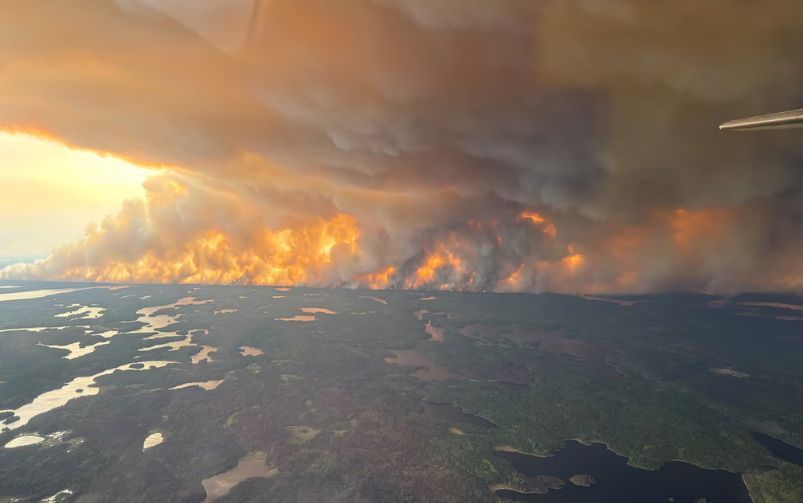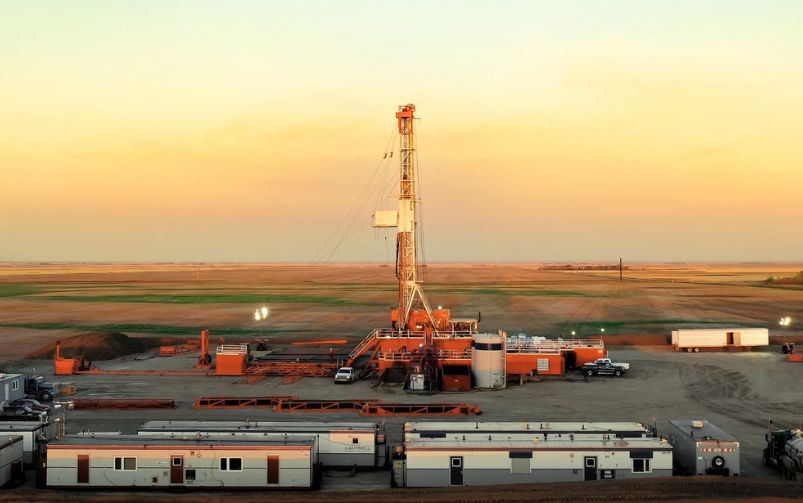The NORCAT Underground Centre in Sudbury, Ontario, is a mining innovation centre that offers hands-on training and also serves as a hub for mining technology development and testing. New provincial funding was announced this week to support its expansion. Courtesy of NORCAT.
Welcome back to your weekly mining news recap, where we catch you up on some of the news you may have missed. This week’s headlines include a Chinese mining giant acquiring Lumina Gold, the Northwest Territories government offering support to the diamond sector, and gold soaring to yet another high.
In its first quarter results for 2025, Teck Resources reported that this year’s production forecast for its QB2 copper mine in Chile will be at the lower end of its estimate due to ramp-up issues, as reported by the Globe and Mail. It predicted that annual copper production for QB2 would be between 230,000 and 270,000 tonnes and molybdenum production would be between 3,000 and 4,500 tonnes. Its zinc business, however, performed better than expected, with strong sales from its Red Dog zinc mine in Alaska and improved profitability at its Trail smelter in B.C.
Ontario is introducing new legislation to accelerate permitting and streamline approvals for resource projects located in “special economic zones,” such as the Ring of Fire, as reported by The Globe and Mail. The province intends to route all required paperwork through its mining ministry alone and respond within 24 months, a step it believes will shorten timelines by up to 50 per cent. Despite the legislation, significant development in the long-delayed Ring of Fire region is unlikely to occur quickly, as infrastructure gaps and public opposition remain ongoing obstacles.
The Ontario government is investing over $1 million in the NORCAT Underground Centre in Sudbury to construct a new 6,000-square-foot facility, as reported by The Sudbury Star. The expansion will include a service shop, offices and training rooms, to further enable training and for mining and resource companies to design, test and repair innovative technologies.
The latest Safety Share webinar from CIM Magazine and the CIM Health & Safety Society explored how digital tools like mobile devices can improve safety and transparency in mining. Panelists from Hudbay Minerals, Suncor, Technica Mining and Redpath Mining shared how real-time connectivity is streamlining risk assessments, improving field communication and enabling workers to make data-driven decisions while on the job. They emphasized that being successful in rolling out digital connectivity requires leadership buy-in, trust in workers and building the right infrastructure, such as charging stations for mobile devices.
Chinese mining company CMOC Group will acquire Canada’s Lumina Gold for about $581 million, as reported by Bloomberg. The deal would give CMOC access to Ecuador’s largest primary gold deposit, the Cangrejos gold project. The acquisition is anticipated to close in the third quarter of this year pending approvals, though it may encounter approval challenges due to the Canadian government’s tightened guidelines on foreign investments in the mining sector, introduced in 2022.
The Northwest Territories government is introducing temporary relief measures aimed at supporting its diamond mining sector. To help ease the pressure felt by miners due to low global diamond prices, inflation, supply chain disruptions and tariffs, the government said it will double the amount of local diamond valuations in 2025-2026, temporarily offer property tax relief and release remaining funds from the Large Emitter Greenhouse Gas Reducing Investment Fund, which will return carbon tax contributions to the Ekati and Gahcho Kué mines to help cover ongoing operational costs.
Gold surged to a record high of US$3,500.10 an ounce on Tuesday before retreating on Thursday, as reported by Bloomberg. The price of gold fell after U.S. President Donald Trump softened his stance on potentially firing U.S. Federal Reserve Chair Jerome Powell and also signalled possible easing of tariffs on China.
The White House has fast-tracked permitting for 10 critical minerals projects under a federal initiative aimed at expediting approvals for essential infrastructure, as reported by Mining Technology. One of the projects includes Rio Tinto and BHP’s Resolution copper project in Arizona. The Trump administration has also signalled plans to approve a land swap needed for both companies to develop the project, one of the world’s largest copper mines. Local Indigenous groups have raised concerns about the project’s potential to destroy a site of religious significance.
Barrick Gold is selling its stake in Alaska’s undeveloped Donlin gold project for US$1 billion to Paulson Advisers LLC and Novagold Resources, as reported by The Globe and Mail. Donlin faces significant infrastructure hurdles and an estimated US$7.4 billion build cost. As Barrick shifts its focus to copper and withdraws from the project due to conflicts with its joint venture partner over the project’s direction, Novagold and Paulson may need to find a new operating partner. Barrick is also looking to sell its Hemlo gold mine in Ontario, the final asset in its Canadian portfolio, as part of its strategy to capitalize on record gold prices and decrease its presence in Canada.
Eldorado Gold’s subsidiary, Hellas Gold, has undertaken one of Greece’s largest mining reclamation projects at the legacy Olympias tailings site, as reported by Alexandra Lopez-Pacheco for the March/April issue of CIM Magazine. Inherited in 2012, the site posed serious environmental risks. Hellas Gold removed and reprocessed old tailings, safely disposed of contaminated soil and has implemented ecological restoration using native plants from a nursery it built. The roughly $150 million investment in the old Olympias tailings management facility marked the first step in transforming a polluted site into a model of responsible resource management through reclamation.
That’s all for this week. If you’ve got feedback, you can always reach us at editor@cim.org. If you’ve got something to add, why not join the conversation on our Facebook, Twitter, LinkedIn or Instagram pages?




